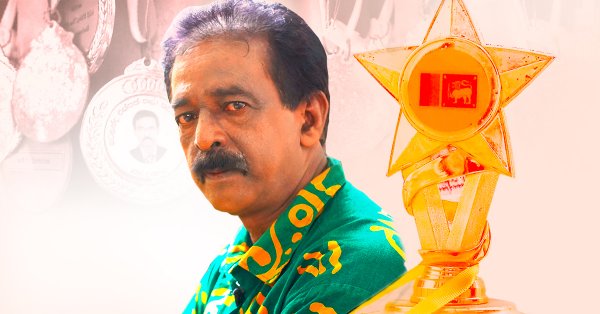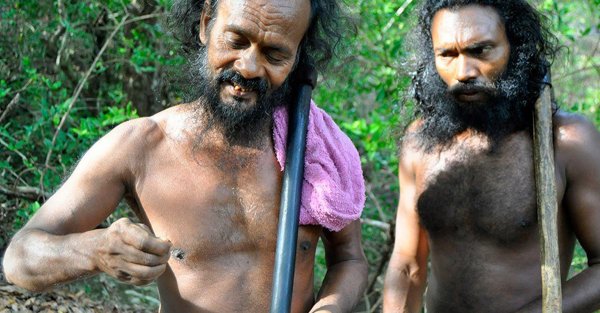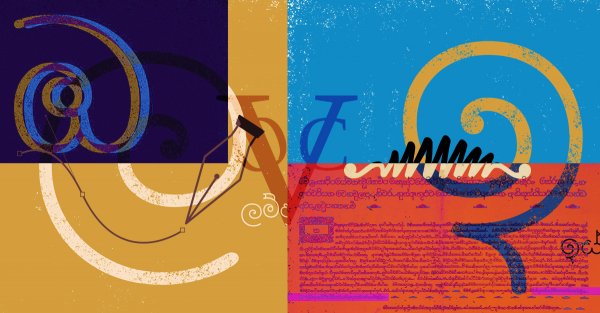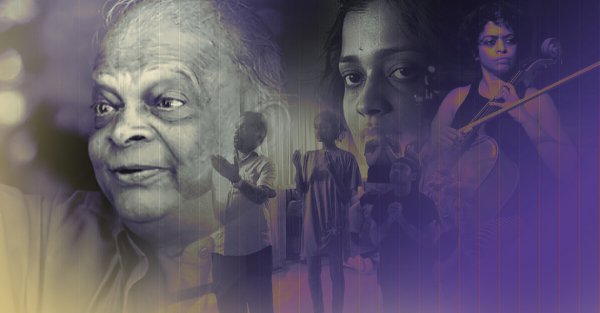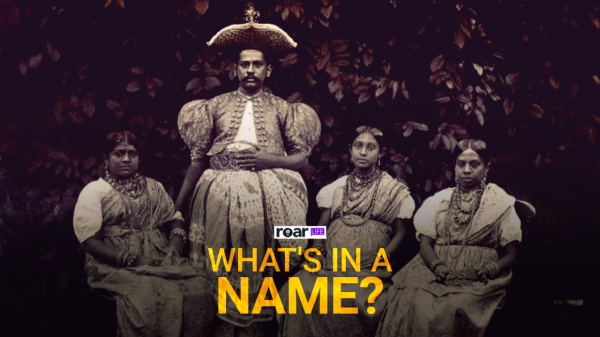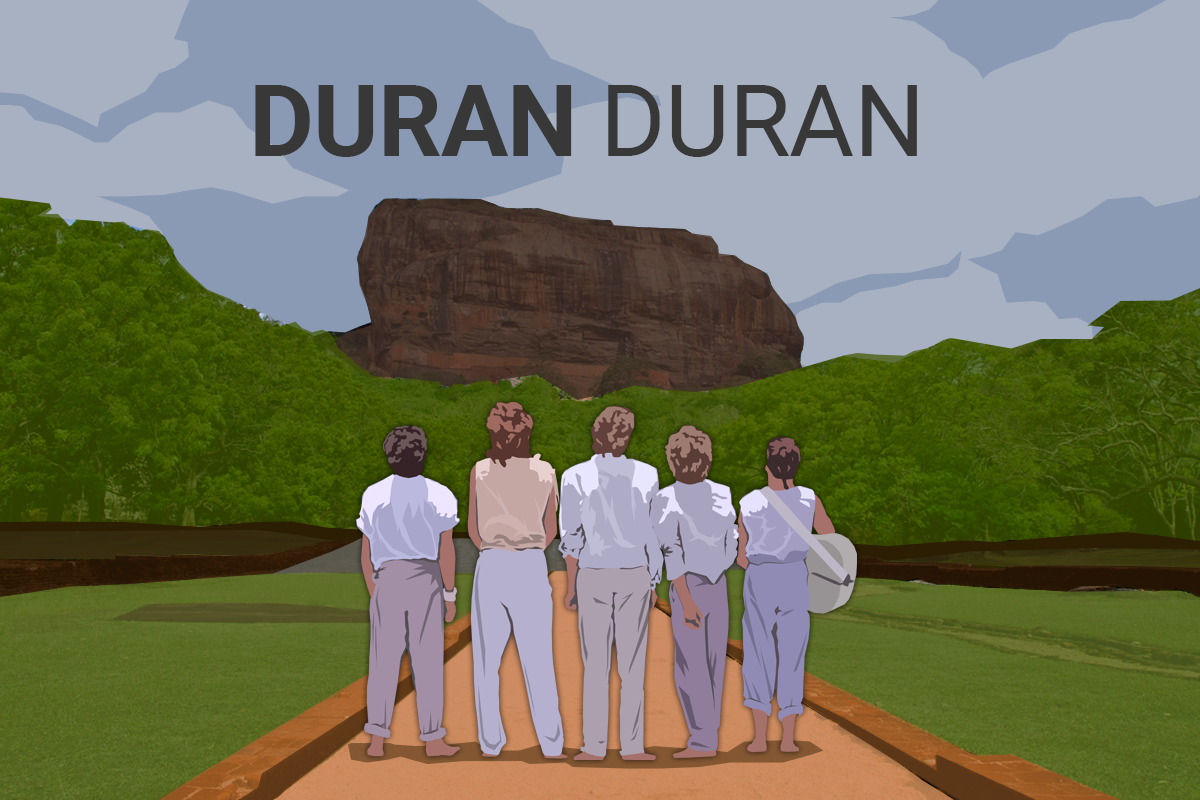
If you’re a person who’s into the New Wave music scene, or ‘80s music as a whole, it’s hard to not know about one of the most memorable bands of the 1980s, Duran Duran.
Their musical roots go back as far as the late ‘70s, and the band was instrumental in not only spearheading the “Second British Invasion” (a term coined to describe the surge of popular UK music acts into the US in the early ‘80s), but the boom of the MTV Generation as well, with their music videos gaining mass popularity on the channel for the majority of their run. Duran Duran’s unique fusion of New Wave, Rock, and Synthpop helped set the tone for the decade and establish what is now the definitive sound of the ‘80s.

The “Fab Five” during their heyday. Credit: Getty Images
And though they are famous for their music, it’s probably not common knowledge that Duran Duran also broke new ground on the music video front, producing a trifecta of music videos filmed right here in Sri Lanka, that essentially molded the MTV legacy.
While their debut album, simply titled “Duran Duran”, received only mild attention on the US charts, it did peak at Number three on the MTV UK Top 20. But it was with their follow-up album released in May of 1982, titled “Rio”, that really catapulted them to superstardom.
Even though the album struggled to pick up momentum during its initial release, its re-release in late 1982 as a “dance album” contained new mixes of the songs that were released as the album’s singles. “Rio” went on to become the band’s most popular (and arguably most well received) album, eventually going on to reach Double Platinum status, and transforming Duran Duran from a UK underground act to international pop sensations.

Patrick Nagel’s iconic work made Rio’s album art. Credit: billboard.com
This ‘unprecedented success’ for both the band and the album could be credited to the music videos that were produced to promote its singles.
When “Rio” was released in 1982, MTV was first making its way into the industry as well, and they wanted to break away from the current format of video production, that, until that time, was generally limited to the low-budget “band-playing-onstage” variety.
Duran Duran capitalised on this shift to cinematic territory, deciding to shoot on 35mm film with professional cameras, with characters that partook in storylines, giving the young medium a movie-like element never seen before.
The music videos for “Save A Prayer” and “Hungry Like The Wolf”, as well as the lesser known “Lonely in Your Nightmare” were among the first products of this movement, all shot in Sri Lanka, and directed by then future filmmaker Russell Mulcahy, who had suggested the island as the location based on an earlier personal visit (he also directed the video for “Video Killed the Radio Star” by The Buggles, which was the first music video ever to air on MTV).
They were filmed as part of their 1983 Duran Duran Video Album, a concept that was realised by the band when it was evident that music video was becoming an effective promotional tool. Subsequently, in 1984, the video album went on to win a Grammy Award for Best Long Form Music Video.
“Hungry Like The Wolf”
“It’s very hard to think of that song without seeing the pictures from the video, because that really was the video that sort of changed everything for the band. We went from being sort of like a club band, an underground band, to being, like, “Wow!” An all-purpose…I dunno, just something more interesting and broader in scope” – John Taylor on “Hungry Like The Wolf” to avclub.com.
This single was the band’s breakthrough hit, but its accompanying music video is considered to be the quintessential Duran Duran visual.
The perhaps more appropriately termed “short film”, was heavily influenced by films such as Raiders of the Lost Ark and Apocalypse Now, and features the Indiana Jones-esque lead character played by frontman Simon Le Bon, who is in pursuit of an exotic leopard-like woman from parties in the city to the lush wilderness of the jungle, eventually culminating in a “show-down” of sorts, complete with not-so-subtle sexual overtones.
Other members of the band are featured running through the streets of Colombo, looking for Simon Le Bon’s character. The famous scene of Simon Le Bon dramatically flipping a table was shot at the Pagoda Green Cabin (formerly the Pagoda Tea Room), with other daytime city scenes shot in and around Galle Fort and Pettah. The opening scenes prominently featured the iconic Cargills building, and the distinctive architecture of Pettah night markets throughout the video. Some footage was shot at what could be recognised as the Amangalla Hotel in Galle as well, formerly known as the New Oriental Hotel.

Frontman Simon Le Bon walking through the markets of Pettah. Credit: YouTube
The director also took filming to the elephant orphanage in Pinnawala as well as the Yala National Park. Interestingly, the imagery of the leopard-woman is said to be based on an ancient Sri Lankan legend of a demonic entity who takes on the form of a female leopard with the intent of seducing and subsequently devouring men.

Simon Le Bon & the Leopard-woman come face to face. Credit: YouTube
The band was struggling to receive decent airplay at the time, and “Hungry Like The Wolf” put the band on heavy rotation on MTV.
Les Garland, the Senior Executive Vice President of MTV at the time was quoted to have said that “Hungry Like The Wolf” was the greatest video he’d ever seen, and the fact that the video won a Grammy Award for Best Short Form Music Video at the 1984 Grammy Awards serves as a testament to that comment.
“Lonely In Your Nightmare”
This song is memorable for its smooth-flowing fret-less bass by John Taylor, but the music video for it is the lesser known of the three filmed on Lankan soil. “Lonely In Your Nightmare” is known to exist in two significant versions, and while the most commonly known version was partially shot in London, the original cut was shot almost entirely in Sri Lanka.
Perhaps the most striking elements of the video are the folk and kandyan dancers putting on a colourful show for the band. In a controversial move, the cultural scenes of the video are juxtaposed against repeated shots of model Vanya Seager sensually twisting and turning in bed, in what one can assume to be a fantasy sequence. The two contrasting sequences seem to have no apparent connection, and it could be for this reason that many scenes were reshot in London to create a framing device for a new plot, featuring the band members but focusing on Simon Le Bon’s point of view.
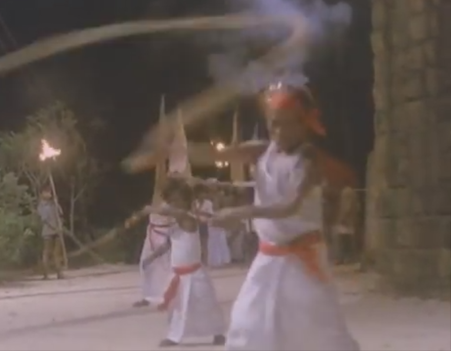
The dancers perform for the band. Credit: YouTube.
Scenes were said to have been shot at Unawatuna Beach, the Amangalla Hotel in Galle, as well as Taprobane Islands, located south of the island near Weligama town. Some footage featuring the elephant orphanage in Pinnawala was utilised in the second version of the video, borrowed mainly from B-roll material for Duran Duran’s “Save A Prayer” video.
“Save A Prayer”
“Save A Prayer” is a staple of every Duran Duran live performance, and is described by fans and critics alike as a lush and uplifting pop ballad. And to say that the music video is the perfect complement to the single is an understatement.
The exotic video was shot in the continuation of the travelogue format director Russell Mulcahy envisioned for the Duran Duran Video Album. The video is adored and fondly remembered by fans for its beautiful cinematography, featuring the band strolling around the sunset-bathed south coast in pastel clothing, interacting with fishermen and children playing on the sand, with Nick Rhodes’ haunting yet meditative melody setting the therapeutic tone for the video.

Bassist John Taylor strumming on acoustic by the beach. Credit: YouTube.
“Save A Prayer” is nothing short of a visual spectacle, as it takes the viewer from the scenic coasts of Unawatuna and Talpe to the Sigiriya Rock, the elephant orphanage in Pinnawala, the reclining Buddha statue at Gal Viharaya, and the ancient ruins of a buddhist temple in Polonnaruwa (and beyond!), all through a sequence of classic cinematic shots.
The video is of course intercut with shots of model Vanya Seager, who is the centre of Simon Le Bon’s attention. The scene in which Simon Le Bon slow-dances with Vanya in a red dress in a hall of the Amangalla Hotel is one of the signature shots that is most talked about by fans. Around midpoint, the video switches from John Taylor playing acoustic on the beach to a series of sweeping aerial shots of the Sigiriya Rock as Andy Taylor’s electric guitar solo comes into play, in what is now considered part of classic Duran Duran imagery.

Soaring view of the Sigiriya Rock. Credit: YouTube
The closing shot is perhaps the most unforgettable of all, with the band slowly walking amongst the pillar ruins at the Lankatilaka temple at Polonnaruwa, before reaching the foot of the famous remains of the statue of Buddha. The final shot of all five members of the band dressed in the most ‘80s of pastel clothing, looking up at the statue in reverence as the camera pulls away has since become iconic.

Duran Duran stand in reverence. Credit: YouTube.
The Colours Of Vice
If one was to really stretch the bounds of influence Duran Duran’s videos in Sri Lanka had on pop culture, this could easily extend to fashion as well:
Miami Vice was the revolutionary TV show that set the trend for pop culture/television fusion, with it pioneering the artful integration of music and fashion into story through stylistic cinematography. The show was also largely responsible for transforming South Beach from the derelict, crime infested area of Miami to the flashy, tropical fashion hub it is today. When Miami Vice was first conceived as “MTV Cops”, the show’s creators looked to revolutionise ‘80s fashion, and the music video “Hungry Like The Wolf” provided them with inspiration. It is said to be the signature white sports coat and pant outfit that John Taylor wears while running through the streets of Pettah and Fort that inspired the classic italian sports coat/linen pant outfit Don Johnson wore as Sonny Crockett.
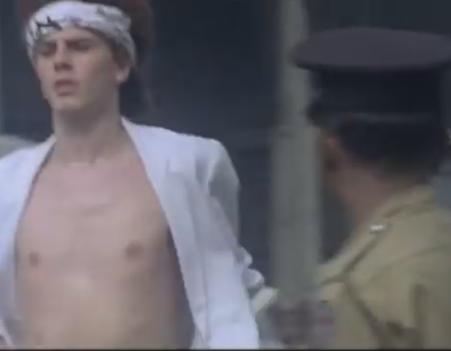
John Taylor runs through the streets of Pettah. Credit: YouTube.
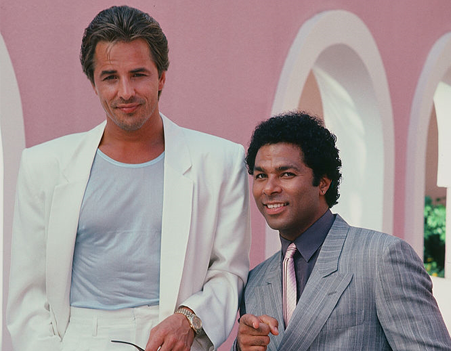
Don Johnson and Philip Michael Thomas in a promo shoot for Miami Vice. Credit: Getty Images.
While it was function over fashion that drove John Taylor to wear white fabric over his bare chest with rolled up sleeves, (the tropical Colombo heat proved to be a testy time for the band!) this look became immensely popular, especially when Miami Vice picked up on the combination and made it their own. Not even halfway into their original televised run, the TV show took the world by storm and forever changed fashion history, with trends from the show still fresh today. And it could all be traced back to that one music video shot in Sri Lanka, that birthed the look that started it all.
“Save A Prayer” and “Hungry Like The Wolf” changed pop culture forever, perhaps more than what is read or spoken about, in more ways than one. When it was decided that Sri Lanka would be the ideal location to visualise the “escape to some place foreign and beautiful”, they couldn’t have been any more correct. The beautiful cinematography combined with historical Sri Lankan cultural landmarks, showcases our country to the rest of the world in a way that hasn’t, or probably won’t be done, for a long time to come.
Featured illustration credit: Roar.lk/Rajith Maligaspe



